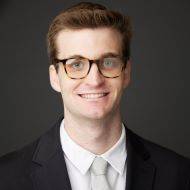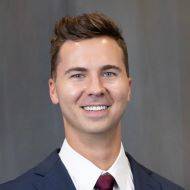Dallin Judd and Chandler Bolles, American College of Radiology® (ACR®) Medical Student Section members, contributed this piece.
 As medical students, our journey in the field of radiology can be both exciting and daunting. We’re excited to delve into the intricacies of our field with Christopher Rhodes, DO, Diagnostic Radiology Associate Program Director at UT Health San Antonio. Dr. Rhodes graduated from Texas College of Osteopathic Medicine and completed his residency and fellowship through UT Health San Antonio. He currently practices in both the department of Abdominal Imaging as well as Breast Imaging & Intervention.
As medical students, our journey in the field of radiology can be both exciting and daunting. We’re excited to delve into the intricacies of our field with Christopher Rhodes, DO, Diagnostic Radiology Associate Program Director at UT Health San Antonio. Dr. Rhodes graduated from Texas College of Osteopathic Medicine and completed his residency and fellowship through UT Health San Antonio. He currently practices in both the department of Abdominal Imaging as well as Breast Imaging & Intervention.
Why did you decide to pursue a career in radiology?
I accidentally stumbled into radiology as a third-year medical student on rotation. During some downtime, my preceptor recommended that I explore other areas in the hospital that I might not have been exposed to. So, I spent time with subspecialty surgery, pathology and radiology. When I was in radiology, I felt that I had finally found “my people.” I saw people who were busy working with PACS, interacting with patients and collaborating with other physicians, and they all loved their jobs. They seemed to be experts in everything, and it was clear that they were a critical part of healthcare. Along with the importance of the radiologists’ role, I found that I loved the imaging, anatomy and procedures. Putting it all together, radiology was the perfect fit for me.
What advice would you give to medical students considering radiology as a specialty?
One of the biggest hurdles is getting exposure to radiology. Many medical students tell me they only experience radiology as third-year students and often stumble into it by accident, as I did. Once a student discovers their interest, they should seek out a rotation as early as possible to ensure they like the specialty and to secure letters of recommendation needed for applications. It is also beneficial to be involved in or take on leadership roles within radiology interest groups. Additionally, finding research and project opportunities can strengthen their application and improve their chances in the Match.
How do you see the field of radiology evolving over the next decade?
I believe the biggest evolution will be the continued integration of AI into our workflows. While AI may not fully interpret images in the near future, it will become more widely implemented to help triage long lists and improve our reports. Additionally, advancements in nuclear medicine are likely as more radiopharmaceuticals are developed, leading to more targeted treatments.
Can you share an exciting initiative or project currently underway in your program?
This is an exciting time for growth at our institution. We are opening a new hospital and new clinics, and we are also expanding our brain imaging research institute, including the addition of a new 7T MRI.
What do you look for in diagnostic radiology applicants?
The most important quality I look for in an applicant is enthusiasm. If someone is excited about radiology, they will be eager to work, learn and collaborate with others (both faculty and co-residents). When reviewing a personal statement, I want to sense that the individual is genuinely excited about becoming a radiologist and understands why. The same applies to the interview. If an applicant has reached the interview stage, it means they are a strong fit for the program on paper. During the interview, I want to see that the candidate is enthusiastic about the program, the area and their future opportunities.
As you consider radiology as a career path, we highly encourage you to take advantage of the ACR Medical Student Hub which includes resources such as free membership, supplemental education and networking opportunities to support every step of your exciting journey.



